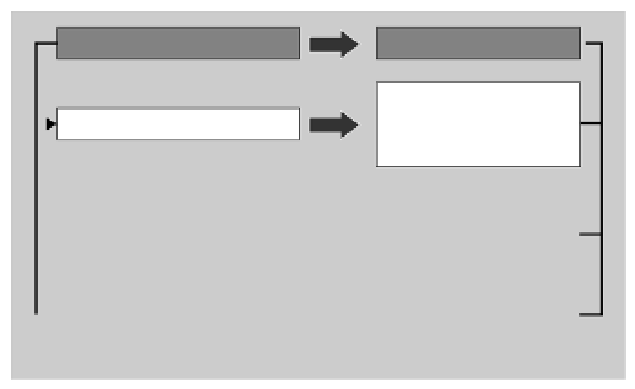Environmental Engineering Reference
In-Depth Information
Socio-economic development
Coastal ecosystems
Wetland desiccation
Agricultural
Dune fixation
Modification of
geodynamic processes
Industralization
Pollution
Urban development
Soil sealing
Fig. 17.4
Schematic representation
of major problems in the study case.
Original from N. Abad.
The problem
attempted through
Pinus pinea
(stone pine) plantations.
Nowadays, however, those pine stands show practic-
ally no regeneration, and are declining rapidly in the
first coastal line. More recently there has been an ever-
growing development of tourist facilities, which con-
tributes to pressures and conflicts over land, water and
energy use (Fig. 17.4). In addition, the redevelopment
of the harbour of Barcelona has led to the initiation
of a large engineering project to deviate the Llobregat
river in conjunction with the enlargement of the
neighbouring international airport.
Since the 1960s, the enlargement of Barcelona's
harbour, and dam construction along the Llobregat
river watershed, have reduced the transport of sedi-
ments both from the coastal current and from the river's
tidal floods. This in turn has caused regression of the
coastal line. Industrial development in this period has
increased air pollution and seawater pollution, esp-
ecially affecting the production of aerosols rich in
surfactant substances that injure coastal vegetation
(Bussotti
et al.
1995). Increased industrial and agri-
cultural demand for fresh water has led to intensified
groundwater pumping and concomitant saline intru-
sion. Tourist development has led to numerous second-
ary housing complexes in the fixed dunes areas, and
the occupation of the first dune line by campsites,
all of which modify the original topography and
depend on the use of exogenous soils from inland areas,
and various inert paving materials, which replace the
original sands (Fig. 17.5). The original pre-disturbance
ecosystems and communities of the coastal areas
were already absent from the site at the time that the
study described in Box 17.2 (page 244) was under-
taken. Instead, various cosmopolitan ruderal species
were abundant, for example
Chenopodium ambro-
sioides
,
Portulaca oleracea
and
Conyza bonariensis
, as
were exotics like
Chloris gayana
,
Carpobrotus edulis
,
Cortaderia sellowiana
and
Myoporum laetum
. Some of
these are proving to be very invasive.
Restoration and rehabilitation procedure
The first step in the restoration process was to arti-
ficially reconstruct a dune topography. Unwanted soil
materials were eliminated, and inter-dune depressions
were created by excavation, providing sand material
to build up a first dune line behind the beach. A pre-
vious study of water-table fluctuations helped estab-
lish the appropriate excavation depth corresponding
to the minimum water-table depth. To reconstruct dune-
formation dynamics, sand traps were installed using
reed (
Arundo donax
) fences oriented perpendicularly
to the dominant winds.
Recreation of coastal ecosystems along the transect
was the next step. For each of the five ecosystem
types recognized, species were selected according to
habitat conditions, reference ecosystems and seeds/
seedling availability. Most of the key species in the
various habitats were re-introduced as they were no
longer present in the vicinity of the site. The goal was
to enhance and, if possible, accelerate secondary
succession. Trying to advance inter-dune depression












